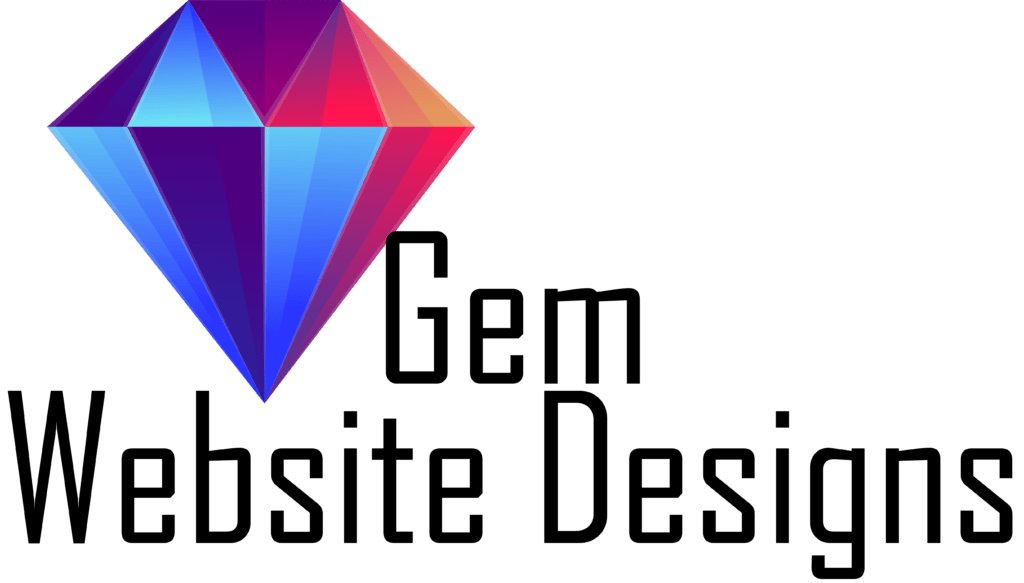In today’s digital age, having a website isn’t just an option—it’s essential. The importance of a well-crafted website goes beyond mere online presence; it’s about establishing credibility, engaging customers, and building your brand. As a business owner, you need to ensure that your website not only exists but shines in the vast expanse of the internet. This isn’t just about aesthetics; it’s about functionality, user experience, and the ability to meet your customers where they are: online.
A well-designed website acts as the heart of your digital marketing strategy, giving you the power to control your online narrative. It’s the first place potential customers go to check the legitimacy of your business, explore your products, or get in touch. Without a well-designed website, you’re invisible to those searching for your services online and risk being perceived as outdated or unprofessional. In this article, we’ll explore the myriad ways a robust website design empowers your business, from enhancing your brand’s image to driving sales and fostering customer loyalty. Join us as we delve into why every detail of your website’s design should be a strategic choice that aligns with your business goals.
First Impressions
First impressions are not just crucial; they are often lasting. When it comes to websites, first impressions are overwhelmingly design-related. Research shows that visual factors influence 94% of first impressions. This statistic underscores the critical role of design in how potential customers perceive your business. A website’s design can quickly determine whether a visitor stays to explore your offerings or leaves to find a competitor.
Consider the broader impact of design beyond just aesthetics. Design-centric companies don’t merely focus on how things look; they care deeply about how their designs function and resonate with users. According to the Design Management Institute, investing in such companies would have yielded returns 228% higher than an equivalent investment in the S&P 500 over a decade. This data highlights the substantial financial benefits of prioritizing design and how it translates into real-world profitability.
Your website is often the first point of interaction with your brand. If this encounter is negative, all the effort you put into your products, services, and customer service could be undermined. A well-designed website conveys professionalism, attention to detail, and customer care—all essential qualities contributing to a positive first impression.
Therefore, the decision to invest in top-notch website design is not merely about enhancing a digital space—it’s about making a strategic investment in your brand’s future. It’s crucial to ensure that your website not only accurately reflects the quality of your business but also has the potential to propel your business to new heights, engaging users effectively from the very first click.

Customers Do Their Research
In today’s digital landscape, customers are more informed than ever before. Close to 76% of consumers, before deciding to physically visit a business, look at its online presence. This trend is even more pronounced in the B2B realm, where 80% of customers research a company online before making a purchasing decision. These statistics highlight a critical point: your website is a crucial gateway through which potential customers assess your credibility and decide whether to proceed with business interactions.
The Impact of Web Presence
This behavior isn’t just limited to selecting products or services but also forming perceptions and expectations. A strong web presence, or lack thereof, can significantly influence these decisions. If potential clients or partners find a poorly designed website, it may deter them from taking the next step. Conversely, a professional and user-friendly website can facilitate their decision-making process, reassuring them of your company’s legitimacy and competence.
The Business Owner's Paradox
Moreover, the judgment isn’t one-sided. Many business owners, even those without a robust website themselves, will evaluate other businesses based on their web design. This creates a paradox where business owners recognize the importance of good design for others but may not prioritize it for their own sites. This discrepancy can lead to lost opportunities as businesses judge each other’s capability and reliability based on their digital footprints.
Investing in a Strong Web Presence
Therefore, investing in a well-designed website isn’t just about attracting customers—it’s about respecting the research process influencing contemporary purchasing behaviors. By acknowledging and adapting to how customers and businesses evaluate potential engagements, you position your business to meet expectations and exceed them, thereby enhancing your competitive edge.
Practical Tips for Website Improvement
To enhance your website, consider the following actionable tips:
- Color Scheme: Choose colors that reflect your brand and are visually harmonious.
- Navigation: Ensure that your website is easy to navigate, with a clear menu structure.
- Content Strategy: Keep your content fresh and relevant, addressing your audience’s needs.
- SEO Best Practices: Integrate SEO into your design to improve visibility.
- Mobile Responsiveness: Optimize your website for mobile devices to ensure accessibility
Your Website Gets Judged
A startling 75% of users admit to making judgments about a company’s credibility based on their website’s design, according to research conducted by Stanford University. This statistic is not just a number—it reflects how critical a professional and appealing website is to your business success. The implications are profound: your website often serves as the first interaction potential customers have with your brand. It shapes perceptions of your company’s reliability and the quality of your products or services. Whether you run a restaurant, an online store, or a professional service, the design of your website can influence how your potential customers perceive the value and quality of what you offer.

Most likely, all your customers use the internet, meaning nearly all will engage with your online presence at some point. With such a high percentage of potential customers basing their judgment solely on your website, every aspect of your site—from the layout and graphics to the user interface and user experience—becomes an opportunity to build trust and credibility.
The Consequences of Not Having a Website
What if your business does not have a website? The answer is stark: you are likely losing customers to competitors who provide a more robust online experience. Customers expect to find reliable and detailed information online in today’s digital-first world. A lack of a web presence sends a message that your business may need to be more legitimate and up-to-date, pushing potential customers toward competitors who have invested in a strong digital footprint.
Cultivating a Positive Digital Impression
To prevent this, it’s essential to ensure your website not only exists but also reflects the ethos and quality of your business. It’s not just about having a website; it’s about having one that effectively communicates your brand and builds relationships with your visitors. This is where you have the power. Strategic design, thoughtful content, and user-friendly interfaces play a crucial role. Investing in these aspects of your website can transform it from a simple information portal into a powerful tool for engaging and converting potential customers.
In sum, your website’s design directly impacts your business’s perceived credibility and quality. With most consumer research and decision-making happening online, your website’s first impression is more crucial than ever. Ensuring this impression is positive and compelling can make the difference between a prospective customer choosing your business or moving on to another.
The Importance of SEO in Website Design
While SEO might seem purely technical, it’s deeply intertwined with website design, and both need to work harmoniously to create a successful online presence. Here’s how integrating SEO with your website’s design is crucial:
SEO-Friendly Design Enhances Visibility
A website’s design can significantly impact its SEO performance. For instance, how you structure your site (its architecture) affects how easily search engines can crawl and index your pages. A well-designed, logical structure with clear navigation helps search engines understand your site better, which can improve your rankings. Similarly, incorporating SEO-friendly features like a sitemap, clean URL structures, and strategic keyword placement within titles, headings, and content can boost your site’s visibility and user engagement.

Mobile Optimization is Key
With the majority of internet traffic coming from mobile devices, search engines like Google prioritize mobile-friendly websites. This means your site’s design must be responsive, automatically adjusting to fit any device’s screen size. A mobile-optimized design enhances user experience and supports your SEO efforts by meeting search engine standards for mobile usability.
Loading Speed and User Experience
Search engines consider site speed and user experience as key ranking factors. The design choices you make, from the images you choose (and their file sizes) to the scripts you run, can dramatically affect how quickly your pages load. Faster loading speeds improve user satisfaction, reduce bounce rates, and can lead to higher search results rankings.
Visual and Interactive Elements
Effective web design includes using visual and interactive elements to engage visitors. However, it’s crucial to balance these elements with SEO best practices. For example, ensuring that images are optimized for fast loading, using ALT tags, and making interactive elements accessible can help improve SEO while also enhancing the user experience.
Consistent Branding and Trust
Your website’s design reflects your brand. Consistent, high-quality design across your site builds trust with users and credibility with search engines, leading to better engagement and conversions. This branding should be apparent in every aspect of the site, aligning with SEO content strategies to present a cohesive and professional online presence.
By emphasizing these aspects, your website design and SEO can work together to attract visitors, engage them, and convert them effectively. Integrating SEO considerations into the design process from the start ensures that your website looks great and is optimized for search engines and user experiences.
Change With The Times
The digital landscape is evolving rapidly, and consumers’ expectations are also changing. Just as investment strategies must adapt to market conditions, so must your digital presence approach. Considering the powerful impact a website can have on your company, it’s clear that it is no longer just an optional marketing tool but essential. It serves as your primary marketing platform, a branding cornerstone, and, most importantly, creates the first impression for your potential customers.
The importance of aligning your website with current trends cannot be overstated. A website that looks outdated or difficult to navigate can reflect poorly on your business, suggesting that your services or products might need to be updated or subpar. On the other hand, a modern, user-friendly website indicates a company that is forward-thinking and attentive to customer needs.

Staying Ahead of the Curve in Website Design
To stay relevant and competitive, it’s crucial to evaluate and update your website regularly. This doesn’t just mean refreshing the graphics or updating the blog; it involves analyzing user experience, optimizing for mobile devices, ensuring fast load times, and ensuring your content is current and engaging.
Comprehensive User Experience Analysis
Regularly evaluating the user experience (UX) is critical. This involves more than just looking at how users navigate your site—it’s about understanding their behavior, preferences, and pain points through data-driven insights. Use heatmaps, user session recordings, and feedback tools to understand better how users interact with your site and where they encounter difficulties. This information can guide redesign efforts that not only make your website more intuitive but also more engaging.
Mobile Optimization and Multi-Device Compatibility
As mobile internet usage continues to outpace desktop, your website must provide a seamless experience across all devices. This means implementing responsive design practices that ensure your site automatically adjusts to fit the screen of any device, whether it’s a smartphone, tablet, or desktop. Regular testing on various devices is necessary to guarantee that all website elements function properly and provide an optimal viewing experience.
Load Time Optimization
Website speed is a critical factor in user satisfaction and SEO rankings. Continually optimizing your website for faster load times is essential. This includes compressing images, minifying CSS and JavaScript files, and leveraging browser caching. Regularly analyze your website’s speed using tools like Google PageSpeed Insights and implement recommended changes to keep your site running smoothly.
Content Refreshment and SEO Alignment
Keeping your content fresh and relevant is crucial for engaging visitors and improving search engine rankings. Regularly update your blog, articles, and multimedia content to reflect your industry’s latest trends, news, and innovations. Additionally, ensure that all content is optimized for SEO with appropriate keywords, meta descriptions, and tags to enhance discoverability and drive organic traffic.
Technological Upgrades and Security Enhancements
Your website’s infrastructure may need updates to stay secure and functional as technology evolves. Regularly update your CMS, plugins, and third-party tools to defend against security vulnerabilities. Implementing the latest web technologies can also improve functionality and enhance the user experience, keeping your site competitive in a rapidly changing tech landscape.
Analytics and Continuous Improvement
Leverage analytics to track your updates’ effectiveness and identify improvement areas. Regular analysis helps you understand which parts of your website are performing well and which need adjustment. Use this data to make informed decisions that drive continuous improvement and help achieve your business goals.
By regularly engaging in these activities, you ensure that your website remains a robust, dynamic platform that effectively meets the needs of your users while staying ahead of industry trends and technological advancements. This proactive approach is key to maintaining a competitive edge in the digital marketplace.
Future Trends in Web Design
In the fast-paced world of digital technology, maintaining a static website is akin to falling behind. To ensure your website continues to serve as an effective business tool, it’s imperative to maintain and actively enhance its elements regularly. This goes beyond mere cosmetic updates; it encompasses a holistic approach to the website’s functionality, user experience, and content relevance. By committing to continuous evaluation and improvement, you can ensure that your website meets current standards and anticipates future needs and trends. Let’s explore the key areas where regular updates can transform your website into a dynamic asset that grows and evolves with your business.
AI and Personalization
Artificial Intelligence (AI) is revolutionizing web design by enabling more personalized user experiences. AI can analyze user behavior, preferences, and interactions to automatically adjust content, layout, and interactions to suit each visitor better. This can range from suggesting products based on browsing history to dynamically changing the website’s navigation to highlight the most relevant pages. AI-driven chatbots and virtual assistants can provide real-time, personalized customer service, making interactions smoother and more engaging.
Voice Search Optimization
With the increasing use of digital assistants like Siri, Alexa, and Google Assistant, optimizing for voice search is becoming crucial. This involves designing web content that aligns with conversational language and answers direct questions that users might ask. Implementing structured data and using natural language processing to understand and predict voice queries are key design strategies that can enhance visibility in voice search results and improve user engagement.
Augmented Reality (AR) in Web Design
AR offers a transformative approach to website user experience. For retail, AR can allow customers to see how a product might look in their own home or how clothing might fit without leaving the website. For educational sites, AR can bring complex data and abstract concepts to life by overlaying information onto real-world environments. Integrating AR into web design requires technical capabilities and a keen sense of how to create intuitive user interfaces that make AR features accessible and useful.
Real-Time Data Visualization
Emerging technologies enable sophisticated real-time data visualization capabilities that can be integrated into websites. This is particularly valuable for financial, scientific, and social monitoring platforms, where data needs to be understood quickly and clearly. By designing interactive graphs, heat maps, and other dynamic visual tools, websites can provide valuable insights that are easy to digest and act upon.
Accessibility Enhancements
Emerging technologies are also playing a critical role in making the web more accessible to people with disabilities. AI, for example, can automate the generation of alt text for images or provide predictive text capabilities. Voice navigation enhancements help users with mobility impairments, while AR can offer unique ways to present information that may be more accessible for users with specific types of visual impairments.
As these technologies continue to develop, their integration into web design will enhance the aesthetic and interactive aspects of websites and significantly improve their functional capabilities, making sites more engaging, accessible, and useful. This blend of form and function will define the next wave of web design innovations.
Using Analytics to Guide Design Decisions
In the digital age, understanding how users interact with your website is not just beneficial—it’s essential for success. Leveraging web analytics can give you deep insights into user behavior, preferences, and pain points. This data is invaluable for making informed decisions that can enhance your website’s design and functionality, leading to improved user engagement and increased conversions.
Analytics can show you which parts of your website are performing well and which are not. For instance, high bounce rates on specific pages might indicate that visitors aren’t finding what they’re looking for or the page isn’t user-friendly. Similarly, by analyzing traffic flow through your site, you can identify where users typically drop off and make necessary adjustments to keep them engaged longer.

GemDos Growth: Electronic Marketing with Data Optimization Strategies-
(Gem Website Designs Sister Company)
For businesses looking to take their data-driven decision-making to the next level, our sister company, GemDos Growth, specializes in electronic marketing and focuses on data optimization strategies. GemDos Growth can help you harness the power of analytics to understand your website’s current performance and predict future trends and user behaviors. This proactive approach allows for continual optimization of your website based on solid data, ensuring that your digital presence is not only reactive but also strategically ahead of the curve.
With GemDos Growth, you can expect:
1. Detailed Analytics Reports:
Understand your audience with comprehensive analytics that outline user behavior, demographic data, and engagement patterns.
2.Optimization Strategies:
Receive tailored recommendations on how to improve your website’s design and functionality based on data insights.
3. Conversion Rate Optimization (CRO):
Increase the percentage of users who perform desired actions on your website, enhancing overall business outcomes.
By partnering with GemDos Growth, you can ensure that every element of your website is optimized for current and future users, making your online presence a powerful tool for business growth. This partnership enhances your web design through Gem Website Designs and ensures ongoing improvement and success through sophisticated data analysis and strategic implementation by GemDos Growth.
Crafting Effective Calls to Action
Crafting effective calls to action (CTAs) is a fundamental aspect of website design that plays a critical role in guiding user behavior and driving conversions. CTAs serve as the touchpoints where user engagement converts into tangible actions, such as purchasing, signing up for a newsletter, or requesting more information. Here’s how integrating effective CTAs is integral to the design process and impacts the overall effectiveness of a website:
Strategic Placement
The design of a website should take into account where CTAs are placed. Strategic placement can significantly impact their visibility and effectiveness. For example, placing a CTA above the fold ensures it is seen immediately by users without scrolling, which can increase the likelihood of action. Similarly, repeating a CTA at both the top and bottom of a page can capture more conversions by appealing to users regardless of how much they choose to interact with the content.
Design and Aesthetics
The visual aspects of CTAs—including size, color, and shape—are crucial in making them stand out from the rest of the page. A well-designed CTA button will draw attention and encourage clicks. Contrasting colors can make a CTA pop, while a size that is neither too big nor too small maintains the page’s aesthetic balance. The choice of typography and wording also plays into the effectiveness, with action-oriented, persuasive text more likely to result in user engagement.
User Experience (UX)
CTAs are not just decorative elements; they must be integrated seamlessly into the overall user experience. This includes considering the user journey through the website and placing CTAs in logical, intuitive spots. For example, a CTA for a product demo might be placed on a product features page rather than the homepage. Ensuring that CTAs are intuitive and contextually placed enhances the user experience by making it easy for users to take the next step without frustration.
Responsiveness
With various devices used to access websites, from smartphones to desktops, CTAs must be designed to work effectively across all platforms. This aspect of web design ensures that buttons are easily clickable, text is readable, and the CTA’s importance is maintained across different screen sizes. A CTA’s responsiveness can significantly affect its conversion rate, as a well-optimized CTA on mobile devices can capture a large audience that might otherwise be lost.
Psychological Impact
Effective CTAs leverage psychological triggers to boost conversions. Design elements like color psychology, action-oriented wording, and urgency (e.g., using phrases like “limited offer” or “buy now to save”) can motivate users to act. The design must balance these elements to create an enticing and compelling CTA that captures attention and persuades users to click.
In summary, crafting effective CTAs is deeply interconnected with website design. It encompasses aesthetics, placement, user experience, responsiveness, and psychological triggers—all of which are essential components of designing a website that looks good and performs well in achieving business objectives. A well-designed CTA can distinguish between a passive visitor and an active customer, making it a pivotal element of successful web design.
Importance of Regular Maintenance & Website Design
Regular maintenance is a crucial aspect of website design that ensures the site remains functional, secure, and effective over time. While the initial design sets the foundation, ongoing maintenance keeps the website up-to-date and operating smoothly. Here’s how regular maintenance relates to website design and its importance:
Ensuring Compatibility and Functionality
Technology and web standards are constantly evolving. What works today may become obsolete tomorrow. Regular maintenance includes updating the website’s backend technologies, such as CMS, plugins, and scripts, to ensure they remain compatible with new browsers and devices. This prevents functionality issues arising from outdated code and ensures that the website continues operating as designed.
Improving User Experience
If a website is not maintained, the user experience can degrade over time. Broken links, slow loading times, and outdated content all detract from the user experience and can reflect poorly on the company. Regular checks and updates help identify and fix these issues, ensuring that the website remains user-friendly and provides a positive experience that aligns with the original design intentions.
Enhancing Security
Security is a significant aspect of website maintenance, especially for sites that handle sensitive user information, such as e-commerce platforms. Regularly updating security features and fixing vulnerabilities is essential to protect against data breaches and hacking attempts. Effective design incorporates these security measures seamlessly and does not disrupt the user experience while safeguarding user data.
SEO Optimization
Search engines favor actively maintained websites, with regular updates to content, improvements to the site structure, and optimizations for speed and mobile usage. From a design perspective, maintaining SEO involves ensuring that the website adheres to the best practices set by search engines, which often update their algorithms. Regular maintenance helps adapt the website design to these changes, ensuring sustained traffic and visibility.
Keeping Content Relevant
The relevance of your website’s content has a direct impact on user engagement and SEO. Regularly updating blog posts, articles, product descriptions, and multimedia content keeps the site relevant and interesting to returning visitors and new users alike. From a design standpoint, it’s also important to update the layout and visuals periodically to keep the site looking fresh and modern.
Brand Image
A well-maintained website reflects positively on the brand. It shows that the business is active, current, and cares about providing a good user experience. Regular maintenance supports the design by ensuring that the visual elements remain effective and appealing, and that the overall site aesthetics do not become dated.
In summary, regular maintenance is integral to website design because it ensures the site continues to function as intended, stays secure, ranks well in search engines, and provides a good user experience. Maintenance allows a website to adapt to new technologies and market conditions, maintaining its effectiveness and relevance long after the initial design is completed.
Why Invest in Professional Website Design?
Investing in professional website design is investing in the future of your business. The statistic that brought this to light for us—indicating the substantial returns on well-designed websites—underscores the fact that effective web design is not just about aesthetics but is also a critical business decision that directly impacts your bottom line.
Conclusion
Your website is more than just a digital footprint; it’s a dynamic tool essential for your business’s success in the digital age. By prioritizing excellent website design through Gem Website Designs, you take control of your digital strategy. Ensuring that every detail of your website’s design strategically aligns with your business goals, you drive growth and foster customer loyalty, enhancing your brand’s credibility and competitive edge.
If you’re looking to start your online journey or need an updated website on a budget, explore our range of pre-made website templates designed to get you up and running quickly and efficiently. For those interested in further business growth, GemDos Growth specializes in electronic marketing and data optimization strategies to help you increase your revenue effectively.
Ready to take your website to the next level or discuss how to leverage your online presence better? Look no further than Gem Website Designs. Our team, with their unwavering dedication and expertise, is committed to creating websites that not only look great but also perform exceptionally, driving your business forward. Let us help you make a lasting impression online.



